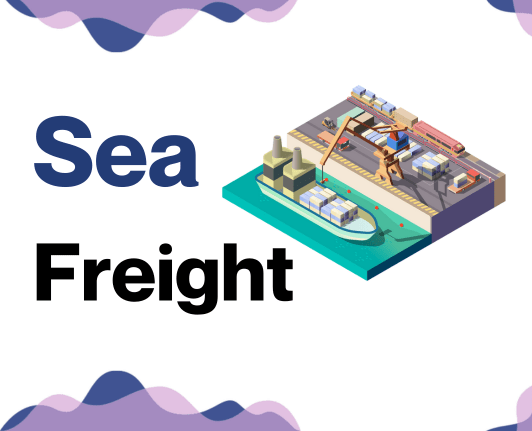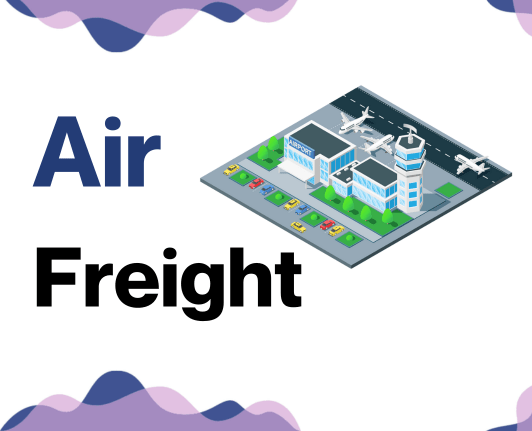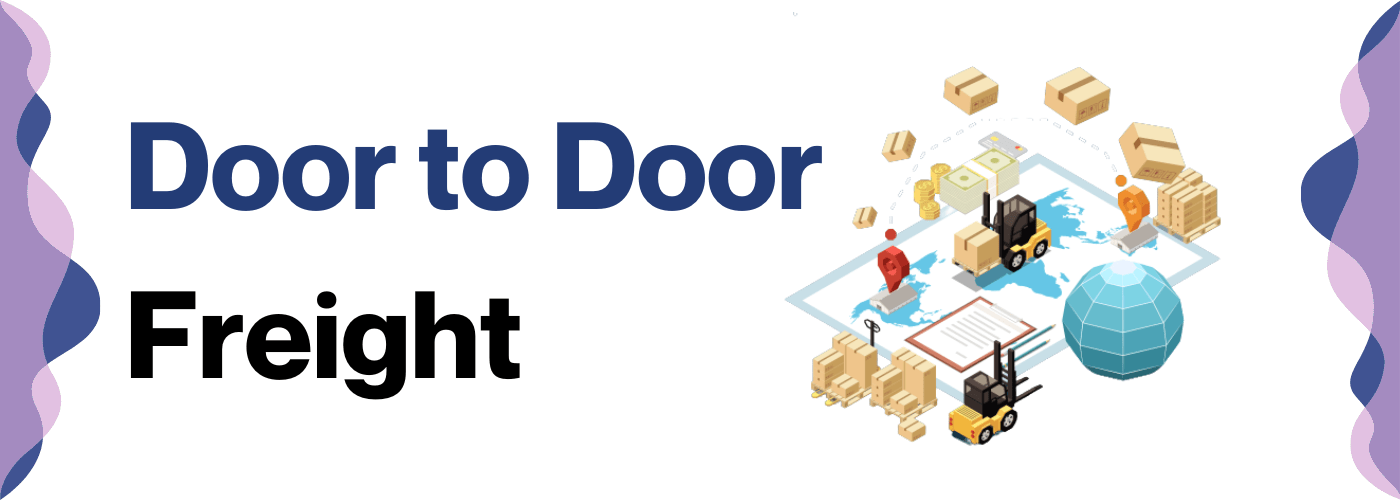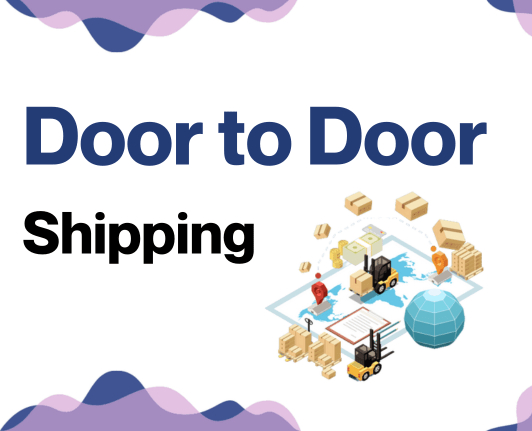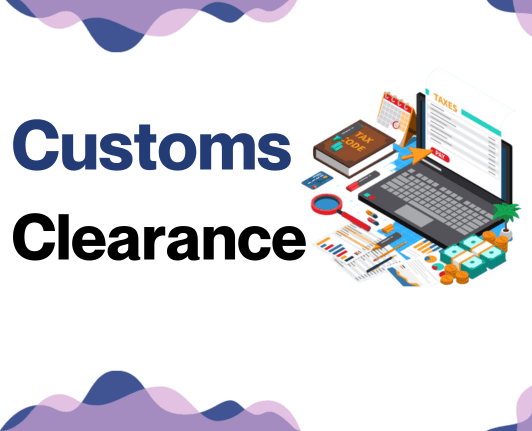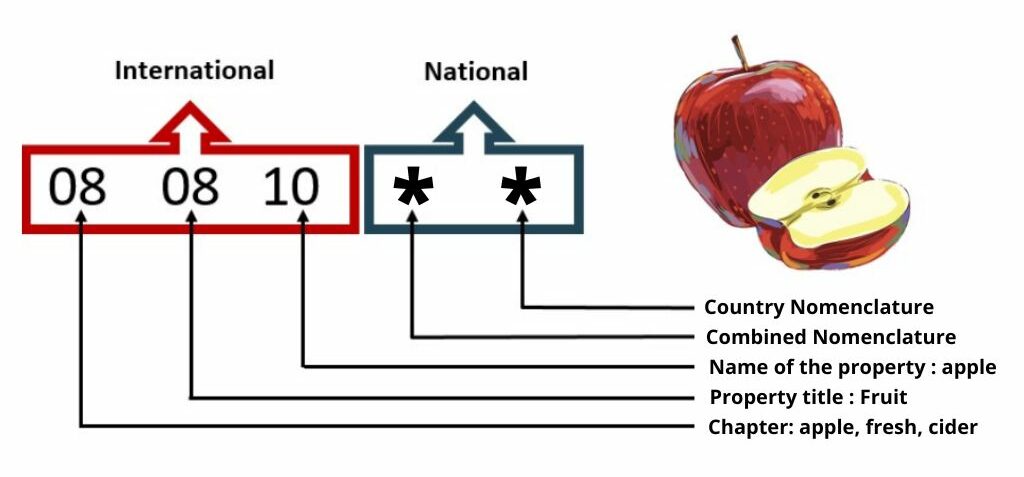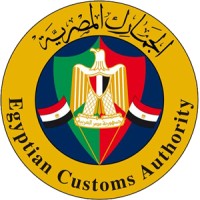Shipping goods between Malaysia and Egypt is trickier than deciphering a camel's thoughts, but have no fear. The complexities of understanding freight rates, transit-times, and customs regulations can feel truly daunting. Luckily, this comprehensive guide is here to demystify the labyrinthine world of international logistics. We'll walk you through various freight options – whether it's by air, sea, road, or rail. Expect to grasp customs clearance procedures, calculate duties and taxes, and receive tailored advice for your business needs. If the process still feels overwhelming, let DocShipper handle it for you! We're skilled freight forwarding veterans, transforming these challenges into triumphs for businesses all over the globe.
Table of Contents
Which are the different modes of transportation between Malaysia and Egypt?
Choosing the optimal shipping method from Malaysia to Egypt is like picking the fastest path in a maze. The twisting 8,750 km distance isn't a straight road, but a windy race packed with hurdles like the sea routes, arid desserts, or bustling airways. It makes you wonder if a Vespa, a camel, or Superman is quickest. While humorous, it's less about quickness than aligning with the complexities of your unique shipping needs. Cutting these knots, air freight and ocean freight emerge as strong contenders, helping your impromptu monster truck rally morph into a smooth scenic drive.
How can DocShipper help?
Looking to ship goods between Malaysia and Egypt? Discover effective, custom strategies with DocShipper! Our expertise in varied transport modes, customs procedures, and administrative tasks simplifies your shipping journey. No jargon, only results. Contact us for a free estimate within 24 hours. Need advice? Ring our experts, free of charge.
DocShipper Tip: Sea freight might be the best solution for you if:
- You're dealing with hefty quantities or oversized goods. Sea transport is your go-to for maximizing space without stretching your budget.
- Time sensitivity isn't a concern for your shipment. Ocean freight is known for its leisurely pace, especially when compared to the speed of air or rail.
- Your supply chain connects key international harbors. This positions you to take full advantage of a wide-reaching network of ocean trade routes.
Sea freight between Malaysia and Egypt
In the realm of international trade, the sea lanes connecting Malaysia and Egypt hold significant importance. Picture these aquatic highways bustling with container ships, shuttling goods back and forth between Port Klang, Malaysia’s largest seaport, and Port Said, one of Egypt's key maritime gateways. However, this busy exchange is not as straightforward as it may seem. You're moving significant volumes of goods - with sea freight, a wallet-friendly solution for transporting bulk items. However, it’s slow, much like the board game 'Snakes and Ladders', you're progressing well, but sometimes you slide back down a hypothetical snake.
Herein lies the crux for many businesses. The challenges are manifold, ranging from regulatory requirements, documentation errors to unexpected shipping delays. Imagine it as a puzzle - one wrong piece and the entire image is skewed. However, fear not. In this guide, we'll unravel these complex challenges, laying out steps like breadcrumbs in a forest, to help you navigate these potentially treacherous waters. Practical, coherent, and demystifying - that's our promise to you.
Main shipping ports in Malaysia
Port Klang
Located in Selangor, Port Klang is Malaysia's busiest port, essential for managing the nation's import and export trading, with an annual shipping volume of approximately 13.2 million TEU. Key trading partners include China, Singapore, and Japan, making it of strategic importance for regional trade. The port's extensive facilities and services position it as a significant global player in ocean freight. If your organization seeks to penetrate Asian markets, particularly those within the ASEAN region, incorporating Port Klang into your logistics strategy could prove beneficial.
Penang Port
Situated in the northern region of Peninsular Malaysia, Penang Port handles about 1.54 million TEU annually. The port maintains strong trade relations with China and India, facilitating an extensive range of goods. Given its strategic location and close proximity to the Malacca Strait, a critical shipping lane, it holds significant maritime relevance. If your company is considering expanding its reach in Northern Malaysia and surrounding regions, Penang Port should be explored for potential synergies and operational efficiencies.
Johor Port
Located in Pasir Gudang, Southern Peninsular Malaysia, Johor Port deals with a shipping volume of 1 million TEU per annum. As the country's southernmost port, its key trading partners include the neighboring countries of Singapore and Indonesia. In particular, it plays a vital role in the distribution of bulk and general cargo. Businesses aiming to build a strong presence in Southern Malaysia or across the nearby straits may find Johor Port a valuable piece of their shipping strategy puzzle.
Tanjung Pelepas Port
Nestled in the state of Johor, Tanjung Pelepas Port is Malaysia's second-largest port and a growing global container terminal, recording a shipping volume of over 9.1 million TEU yearly. Strategically placed near the mouth of Pulai River, it serves as a primary gateway for major global shipping lines, especially to the Southern Asia and Oceania regions. If you're seeking to diversify your supply chain and access varied markets, the arms of Tanjung Pelepas await to further your reach.
Bintulu Port
Found in the state of Sarawak, East Malaysia, Bintulu Port is known for its specialization in the handling of Liquid Natural Gas (LNG) cargo, with an annual volume of 28.1 million tons of bulk cargo. Vital trading partners include Japan, South Korea, and Taiwan, which import significant quantities of LNG. Any company in the energy industry or those depending on LNG for operations might consider incorporating Bintulu into its logistics plans for increased efficiency.
Kuantan Port
Kuantan Port is suitably positioned on the East Coast of Peninsular Malaysia. With an annual container handling capacity of 1 million TEU, it supports diverse cargo types. This port further solidifies its strategic significance through its collaboration with China in the One Belt, One Road initiative. If your business is looking at robust connectivity across multiple international markets and an ability to handle varied cargo types, Kuantan Port might be an ideal fit in your logistics blueprint.
More detailed information can be obtained through direct access to the official website of each port by clicking on their respective links embedded in the port names.
Main shipping ports in Egypt
Port of Alexandria
Location and Volume: Located in the heart of Egypt's second-largest city, the Port of Alexandria is the nation’s main gateway to the Mediterranean, handling approximately 60% of Egypt’s foreign trade with a shipping volume of around 1.5 million TEU.
Key Trading Partners and Strategic Importance: This maritime hub has a strong trading relationship with Europe, the United States, and the Far East. Its strategic location makes it a central point for maritime transportation and an important transhipment center.
Context for Businesses: If your business strategy involves the Mediterranean or European markets, the Port of Alexandria, with its substantial terminal handling capacity and multi-modal links, could be pivotal to your supply chain efficiency and expansion plans.
Port of Damietta
Location and Volume: Positioned at the eastern part of the Nile Delta, the Port of Damietta is a significant hub for container shipping, boasting a volume of over a million TEU.
Key Trading Partners and Strategic Importance: It maintains robust trading relationships with the Mediterranean and Black Sea regions. It's recognized for its processing of agricultural goods and crucial role in Egypt’s furniture export sector.
Context for Businesses: If your operations involve agricultural products or furniture, the Port of Damietta, renowned for its specialized handling capabilities, could be an essential cog in your logistics plan.
Port Said
Location and Volume: Sitting at the northern entrance of the Suez Canal, the Port Said facilitates over 30% of the entire global shipping traffic, handling nearly 3.3 million TEU.
Key Trading Partners and Strategic Importance: With Asia and Europe as its major trading partners, its strategic location on the Suez Canal's entrance point underscores its significance on the global maritime map.
Context for Businesses: If your enterprise seeks to tap into Asia and Europe, Port Said’s proximity to these markets and to the globally significant Suez Canal is likely to streamline your shipping routes.
Sokhna Port
Location and Volume: Located on the Red Sea at the Gulf of Suez, the Sokhna Port provides seamless connectivity to the Middle East and Asia, handling around 0.5 million TEU.
Key Trading Partners and Strategic Importance: As a crucial part of the Suez Canal Economic Zone, it has a significant trading relationship with ASEAN countries, and is a major port for Egypt's oil exports.
Context for Businesses: If your venture spans the Middle East and Asian markets or involves oil & gas, Sokhna Port's suitable location and specialized oil shipping facilities would give your enterprise a definite advantage.
Red Sea Ports Terminal
Location and Volume: Located in the Red Sea Governorate, the Red Sea Ports Terminal offers superior access to Red Sea trade routes, processing over 0.45 million TEU.
Key Trading Partners and Strategic Importance: Holding a pivotal role in the trade with African and Arabian Gulf Countries, it functions as a key junction for major trade routes.
Context for Businesses: If your business is focused on Africa and the Arabian Peninsula markets, the Red Sea Ports Terminal, as a key trade junction, would ensure seamless connections.
West Port Said
Location and Volume: Located on the west bank of the Suez Canal at Port Said, West Port Said has the capacity to accommodate larger vessels due to its deeper waters, handling an impressive volume of approximately 3 million TEU.
Key Trading Partners and Strategic Importance: It has strong trading relationships with European countries and Asia and is an integral part of the Suez Canal Container Terminal.
Context for Businesses: If your business operations involve handling larger ships and require rapid access to European and Asian markets, West Port Said's deeper berth and strategic positioning will be pivotal to streamlining your supply chain processes.
Should I choose FCL or LCL when shipping between Malaysia and Egypt?
Sea freight between Malaysia and Egypt: you've got two great options, Full Container Load (FCL) and Less than Container Load (LCL), commonly known as consolidation. Picking the right choice isn't just about saving cash; it's also about ensuring a smooth, timely delivery. But how do you decide, and what impacts could this choice have on your shipping journey? Get ready to learn the ins and outs of both options and make a strategic decision tailored perfectly for your unique shipping needs.
LCL: Less than Container Load
Definition: Less than Container Load (LCL) shipment is a cost-effective method where your cargo shares a container with other shippers’ goods.
When to Use: LCL is highly recommended if your shipping volume is less than 13-15 cubic meters (CBM). The flexibility of this option makes it suitable for businesses with small, infrequent shipments.
Example: Consider a small crafts vendor based in Malaysia looking to export handcrafted products to Cairo. Given their shipment's volume and irregular frequency, a LCL shipment might be their best choice, allowing them to share the freight costs with other shippers.
Cost Implications: LCL freight has its financial advantages for low-volume shippers. You only pay for the space your cargo occupies, and not for the entire container. However, costs may fluctuate due to factors like the number of consolidations per week, which impact the freight rate. Nonetheless, the flexible pricing of LCL freight often makes it a preferable choice for businesses with lower-volume shipping needs.
FCL: Full Container Load
Definition: FCL (Full Container Load) shipping is a type of ocean freight where the entire container is used by a single shipper. It guarantees safety as your goods are sealed from origin to destination in a 20'ft or 40'ft container.
When to Use: FCL is typically the most cost-effective option if you're shipping high volume goods—more than 13/14/15 CBM. For example, if you're exporting furniture or large machinery between Malaysia and Egypt, FCL would be a suitable choice due to its capacity and cost-efficiency.
Example: Imagine a Malaysian company, 'Temasek Electronics', exporting a batch of high volume electronic goods to Egypt. To save costs and ensure safety, they opt for an FCL container. With a quote from their freight forwarder, they effectively manage to dispatch their cargo safely and within budget.
Cost Implications: While obtaining an FCL shipping quote, note that the cost is not determined by the amount of cargo, but rather the space you're purchasing i.e., a 20'ft or 40'ft container. Therefore, the cost remains constant even if the container is not completely full, making FCL more affordable for bulk shipments.
Unlock hassle-free shipping
Looking for hassle-free shipping solutions between Malaysia and Egypt? DocShipper is your go-to freight forwarder. Our expert team takes into account crucial factors like your goods' volume, type, urgency, and budget. We'll guide you whether a consolidation or full container ocean freight option suits your business requirement. Don't tackle complicated shipping decisions alone: let us streamline your logistics. Ready to ship smarter, not harder? Connect with DocShipper today for a free shipping estimate.
How long does sea freight take between Malaysia and Egypt?
On average, transporting goods via sea freight between Malaysia and Egypt can take approximately 4 to 6 weeks. These transit times incorporate various factors such as the specific ports of departure and arrival, the weight of the goods being transported, and their nature. As these factors can greatly influence transit times, it's highly recommended to get a custom quote for your shipping needs. Freight forwarders like DocShipper, with their expertise and resources, can provide you a more accurate and tailored estimate.
Below is a comparative overview of the average transit times from the major ports in Malaysia and Egypt:
| Ports in Malaysia | Ports in Egypt | Average Transit Time (Days) |
| Port Klang | Port Said | 20 |
| Port of Johor | Alexandria Port | 45 |
| Kuantan Port | Damietta Port | 32 |
| Penang Port | Sokhna Port | 33 |
*Note: Transit times are estimated averages and can vary due to several factors. It is advisable to contact a freight forwarding expert for precise timing and tailored assistance.
How much does it cost to ship a container between Malaysia and Egypt?
Understanding the cost to ship a container between Malaysia and Egypt involves considering a multitude of variables. Ocean freight rates, for instance, can swing widely due to factors like the Points of Loading and Destination, the specific carrier chosen, the nature of the goods, and even monthly market fluctuations. Thus, a precise dollar figure isn't always feasible upfront. Instead, we view every shipping cost as unique, quoting on a case-by-case basis. Having our shipping specialists on your side means you get tailored, optimal rates designed specifically for your needs. Rest assured, we're here to navigate these waters, together.
Special transportation services
Out of Gauge (OOG) Container
Definition: Out of Gauge (OOG) containers are specialty shipping units designed for oversized or non-standard-shaped cargo that doesn't fit in standard containers. Your Out of gauge cargo may need one due to its abnormal dimensions.
Suitable for: Bulkier goods, large machinery, industrial equipment, and heavy objects.
Examples: Generators, turbines, excavators, and other oversized engineering and construction equipment.
Why it might be the best choice for you: If your cargo's height, length, or width exceeds the measurements of a standard container, an OOG container offers the perfect solution for secure and convenient transport from Malaysia to Egypt.
Break Bulk
Definition: Break bulk is the shipping method where goods are loaded individually instead of in containers. Each item is known as a loose cargo load.
Suitable for: Non-containerized goods. Items that simply cannot be packed into containers due to their size or shape.
Examples: Large pieces of wooden furniture, heavy ropes, steel beams, and other similarly large commodities.
Why it might be the best choice for you: If your goods are not suitable for containerization, break bulk shipping ensures they can be handled individually, providing an organized and efficient means of transfer.
Dry Bulk
Definition: Dry bulk refers to shipping goods in large quantities without any packaging. The items are commonly poured into the ship's hold.
Suitable for: Commodities in larger quantities, like coal, grains, or minerals.
Examples: Sand, sugar, fertilizer, or wheat.
Why it might be the best choice for you: If your business deals with large quantities of unpackaged goods, the dry bulk shipping method can offer an efficient and cost-effective transportation solution.
Roll-on/Roll-off (Ro-Ro)
Definition: Roll-on/Roll-off (Ro-Ro) shipping involves vessels designed to carry wheeled cargo. The cargo rolls on and off the ro-ro vessel on its own wheels or using a platform vehicle.
Suitable for: Vehicles, trailers, and any machinery with wheels.
Examples: Cars, trucks, trailers, buses, or tractors.
Why it might be the best choice for you: If your shipping needs involve wheeled cargo, like vehicles or machinery, then Ro-Ro provides an efficient and suitable solution, as it simplifies the handling process and minimizes potential damage during loading/unloading.
Reefer Containers
Definition: Reefer containers are refrigerated containers used for transporting goods that need to be maintained within specific temperature ranges.
Suitable for: Perishable goods and temperature-sensitive items.
Examples: Fresh fruits, dairy products, seafood, pharmaceuticals, and vaccines.
Why it might be the best choice for you: If you're shipping perishable and temperature-critical goods, a reefer container ensures your products arrive from Malaysia to Egypt just as fresh as when they left.
Understanding your cargo's specific needs and choosing the right shipping option can seem daunting. Fortunately, at DocShipper, we are experts in analyzing these details to provide the best sea freight solution tailored for your shipment. If any of these options sound like a good fit for your shipping requirements, contact us for a free shipping quote within 24 hours.
DocShipper Tip: Air freight might be the best solution for you if:
- You're pressed for time or facing a non-negotiable deadline. Air freight delivers unparalleled speed when it comes to transit times.
- Your shipment is modest in size, falling under 2 CBM. Air freight is particularly well-suited for these smaller consignments.
- Your supply chain includes destinations that are off the beaten maritime or rail paths. Air freight gives you access to a comprehensive global airport network.
Air freight between Malaysia and Egypt
When time is of the essence and getting goods from Malaysia to Egypt pronto is the goal, air freight is your knight in shining armor. Picture this–you're shipping small, high-value components for electronics. They're lightweight, compact, but worth a pretty penny. Air freight shines here, turning the big bad wolf of lengthy sea routes into a docile lamb, delivering your precious cargo swiftly and reliably.
But hold on, don't be so quick to jump on board. Many businesses stumble, making costly mistakes. They overlook tiny details, like using the correct formula for calculating the weight of their goods. Imagine going to a store and paying for a bag of apples by their size, not considering their weight–sounds unfair, doesn't it? This dilemma is often mirrored in air freight and can burn a hole in your pocket. But don't fret, we'll dive deeper into these invisible snares, ensuring your air freight journey is smooth sailing.
Air Cargo vs Express Air Freight: How should I ship?
When it comes to speeding up your Malaysia to Egypt shipping time, options abound! You might be considering Air Cargo, where your goods hitch a ride with other consignments in airlines. Or you might be eyeing Express Air Freight, which zips your goods to Egypt in a dedicated plane. Before deciding, it's crucial to get the lowdown on both choices, ensuring your business's specific needs are met. Let's break it down.
Should I choose Air Cargo between Malaysia and Egypt?
When exporting goods from Malaysia to Egypt, you might find air cargo a reliable and cost-effective choice, especially for shipments over 100kg (220lbs) or 150kg (330lbs). Top-rated airlines such as Malaysia Airlines and EgyptAir offer extensive cargo services. Despite longer transit times due to fixed schedules, the certainty and speed of air cargo can suit your budgetary needs, providing an attractive option compared to other shipping methods.
Should I choose Express Air Freight between Malaysia and Egypt?
Express air freight, utilizing cargo-only aircraft, can be an optimal choice for shipments under 1 CBM or 100/150 kg (220/330 lbs). This specialized service offers quick, reliable delivery and the convenience of door-to-door shipping. Some renowned players in the sector are FedEx, UPS, and DHL, known for their express delivery capability worldwide. With faster customs clearance processes, express air freight between Malaysia and Egypt can be a perfect choice if you're looking for speed, consistency, and tracking services. It's particularly advantageous for time-sensitive or valuable shipments.
Main international airports in Malaysia
Kuala Lumpur International Airport
Cargo Volume: The airport shipped about 726,230 tons of goods in 2021.
Key Trading Partners: Primary cargo destinations include China, Singapore, Japan, USA, and Australia.
Strategic Importance: KLIA is the main international airport in Malaysia, making it a vital connection point between Asia, Europe, and America.
Notable Features: KLIA possesses a dedicated cargo and freight village, known as KLIA Air Cargo Terminal 1 (KACT1), serviced by numerous airlines and freight-forwarding businesses.
For Your Business: If you aim to reach Asian, Australian, American, or European markets, KLIA's extensive network might be a critical advantage for your supply chain.
Penang International Airport
Cargo Volume: In 2020, Penang International Airport handled more than 153,703 tons of cargo.
Key Trading Partners: Major trading partners include China, Singapore, Hong Kong, and the United Arab Emirates.
Strategic Importance: Situated on Penang Island, it's an important trading post for businesses in northern Malaysia and southern Thailand due to its critical geographical location.
Notable Features: Fostering a thriving tech sector, the airport is known for transporting highly sensitive and valuable electronic goods.
For Your Business: If your cargo includes high-tech devices or electronic components, Penang's experienced operations handling these goods could benefit your business.
Sultan Abdul Aziz Shah Airport
Cargo Volume: Approximately 25,000 tons of cargo gets moved annually.
Key Trading Partners: serves destinations primarily within the ASEAN region.
Strategic Importance: It's a secondary airport serving the Greater Kuala Lumpur area, playing an essential role for smaller, more time-sensitive shipments.
Notable Features: The airport is also recognized as Subang Skypark and is a hub for corporate and private aviation services.
For Your Business: If your business deals with time-critical shipments within the ASEAN region, this airport might help you achieve swift deliveries.
Kuching International Airport
Cargo Volume: Moves around 20,000 tons of cargo yearly.
Key Trading Partners: Frequently transports goods to and from Singapore, China, and Brunei.
Strategic Importance: This airport is the primary gateway into Sarawak, Borneo's Malaysian state, serving both domestic and international flights.
Notable Features: while it is known more for passenger services, it possesses capabilities to handle regular cargo flights.
For Your Business: If you're aiming to explore the Sarawak market or connect to Borneo Island, Kuching International Airport might be the gateway you need.
Kota Kinabalu International Airport
Cargo Volume: Approximately 30,000 tons of goods are shipped annually.
Key Trading Partners: Major collaborations with importers and exporters from China, Taiwan, and Australia.
Strategic Importance: It is the busiest airport in Malaysian Borneo and the second busiest in Malaysia, serving as a direct link to East Asia.
Notable Features: The airport has been expanding rapidly in recent years, with plans for more cargo space and new routes.
For Your Business: If your shipping strategy aims at East Asian markets, the strategic location and growing capabilities of this airport could potentially expand the reach of your business.
Main international airports in Egypt
Cairo International Airport
Cargo Volume: The Cairo International handles about 400,000 tonnes of cargo annually, making it one of the busiest cargo handlers in Africa and the Middle East.
Key Trading Partners: The airport is primarily linked with Asia, Europe, and other African countries. Hence, trading partners include China, UAE, Germany, and South Africa among others.
Strategic Importance: Its strategic location in North Africa, with its proximity to the Suez Canal simplifies shipping, saving both time and cost.
Notable Features: The airport boasts a recent cargo terminal which enhances cargo handling efficiency.
For Your Business: It presents an efficient transit point if you do businesses with countries in Asia, Europe, or Africa. It’s robust infrastructure and modern cargo facilities make it worth considering for your logistics strategy.
Alexandria International Airport
Cargo Volume: Though smaller than Cairo, Alexandria airport still processes tens of thousands of tons of cargo yearly.
Key Trading Partners: It mainly handles cargo traffic to and from Europe, the Middle East, and other parts of Africa.
Strategic Importance: It’s located on Egypt’s northern coast, making it a viable option for businesses dealing with Mediterranean countries.
Notable Features: It has a dedicated cargo terminal that ensures safe and efficient handling of freight.
For Your Business: If your business involves frequent shipping to the Mediterranean region, you may opt for this airport to leverage its dedicated cargo terminal and strategic location.
Sharm el Sheikh International Airport
Cargo Volume: It’s somehow small on cargo traffic, dealing with only a few thousand tons of cargo each year.
Key Trading Partners: Given its tourist-centric nature, most cargo traffic is between Sharm el Sheikh and Europe.
Strategic Importance: It’s a crucial transit point for perishable goods due to its cool storage facilities.
Notable Features: It has dedicated cool storage facilities, ideal for perishable goods.
For Your Business: If your business deals with perishable goods like food and flowers, this airport with its unique cold storage facilities might be the perfect fit for your business.
Note: While accurate at the time of writing, cargo handling can change due to factors like seasonal demand, infrastructure upgrades, or changes in trade patterns. Hence, consider checking the airport’s official website for the latest information before making your decision.
How long does air freight take between Malaysia and Egypt?
Shipping between Malaysia and Egypt by air freight typically takes about 3 to 5 days. However, it's essential to note that transit times may not be the same for all shipments. Factors such as the chosen airports of departure and arrival, the weight of your shipment, and the specific nature of your goods can all alter shipping times. If you're seeking precise timelines for your shipment, consulting with a freight forwarder like DocShipper is your best bet.
How much does it cost to ship a parcel between Malaysia and Egypt with air freight?
Estimating air freight rates between Malaysia and Egypt can be challenging due to several variables like proximity to departure and arrival airports, dimensions and weight of the parcel, type of goods, among others. However, as an indicative figure, air freight rates typically fall between $3 - $7 per kilogram. Please note that these rates are subject to change and hence it's important to get a custom quote. Our team prides itself on diligence and transparency, working closely with you to obtain the most economical rates, tailoring each quote to your specific needs. Eager to find out more? Contact us and receive a free quote in less than 24 hours!
What is the difference between volumetric and gross weight?
Gross weight is the actual weight of your shipment, including packaging. It's measured in kilograms (kg) on a scale. On the other hand, volumetric weight, also known as dimensional weight, is a pricing technique for commercial air transport, which uses an estimated weight that is calculated from the length, width, and height of a package.
For Air cargo, you calculate the volumetric weight by multiplying the package’s length, width, and height (in centimeters) and dividing the result by 6,000. For Express Air Freight, it’s the same method but the resulting number is divided by 5,000. The resulting weight is then compared with the actual (gross) weight.
Take for example an Air cargo shipment with a box of goods that weighs 20kg and has dimensions of 50cm x 40cm x 30cm. The volumetric weight would be (50 x 40 x 30) / 6,000 = 10 kgs. Now, converted to pounds, the package's gross weight is roughly 44lbs, while the volumetric weight is approximately 22lbs.
In Express Air Freight, however, the same box's volumetric weight becomes 12 lbs (50 x 40 x 30 / 5,000), which is about 26.4lbs.
Between the gross weight and the calculated volumetric weight, freight charges will be determined based on the higher figure. This is essential to know because it affects the cost of your freight service. You do not want any surprises when it comes to getting your goods shipped between Malaysia and Egypt or anywhere else in the world.
DocShipper tip: Door to Door might be the best solution for you if:
- You value convenience and want a seamless shipping process, as door-to-door takes care of every step from pickup to delivery.
- You prefer a single point of contact, as door-to-door services typically provide a dedicated agent to handle all aspects of the shipment.
- You want to minimize the handling of your goods, reducing the risk of damage or loss, as door-to-door minimizes transitions between different modes of transport.
Door to door between Malaysia and Egypt
International Door-to-door shipping is a full-service freight solution where the logistics firm handles everything from pickup to final delivery. Shipping from Malaysia to Egypt? Door-to-door offers benefits like simplified logistics, comprehensive service, and less worry about customs. Sounds attractive, right? Well, roll up your sleeves and let's dive in!
Overview – Door to Door
Thinking about transporting goods between Malaysia and Egypt? Consider Door to Door shipping - your stress-free passport to seamless logistics! Avoid the complexity of customs clearance, tangled administrative procedures, and stringent cargo regulations. Instead, enjoy the peace of mind that comes with our comprehensive service - we take care of everything from pick-up to delivery! There are challenges, of course, depending on your shipment size and urgency. Yet, it's no wonder this service is a hot favorite among DocShipper's clientele. Dive in, discover the practicalities, and see how this can be the solution that simplifies your shipping conundrum. Keep reading for the full scoop!
Why should I use a Door to Door service between Malaysia and Egypt?
Don't love logistical hassles and shipping nightmares? No worries, we got you! Here are five compelling reasons why Door to Door service is your new best friend for shipments between Malaysia and Egypt.
1. Farewell Stress: With Door to Door service, forget the messy jargon-filled world of logistics! From pickup to delivery, every aspect of the shipping process is expertly managed for you. Your cargo will be in professional hands all the way.
2. Deadline Juggler: Urgent shipment? No problem. Timely delivery is ingrained in the DNA of Door to Door service. So, whether you're sending auto parts or fashion merchandise, it'll reach just in time for the big showcase.
3. Curator of Complexity: Fragile ceramics? Heavy machinery? Odd dimensions? Bring it on! Door to Door services specialize in handling complex cargo types, ensuring that every item is well-cared for and arrives in mint condition.
4. Convenience King: Forget about juggling between multiple service providers for trucking, navigating customs, and final delivery. The Door to Door service handles it all, freeing your time to focus on what really matters—growing your business.
5. Destination Maestro: With an extensive global network, navigating the delivery intricacies from Malaysia's tech parks to Egypt's bustling markets becomes a breeze! There's no nook or cranny too remote for a Door to Door delivery.
In a nutshell, Door to Door service transforms shipping from a daunting task into a smooth, hassle-free experience. So, sit back, relax, and let the experts take logistics off your plate. Happy shipping!
DocShipper – Door to Door specialist between Malaysia and Egypt
Experience seamless and stress-free door-to-door shipping between Malaysia and Egypt with DocShipper. Our skilled team takes care of everything – from packing to transport, leveraging various shipping methods to ensure smooth delivery. All your customs procedures are handled expertly, leaving you worry-free. Get a dedicated Account Executive to manage all your shipping needs. Reach out to us for a free estimate within 24 hours, or call our consultants for advice... Always free! Let DocShipper be your reliable partner in comprehensive shipping solutions!
Customs clearance in Egypt for goods imported from Malaysia
Shipping goods from Malaysia to Egypt entails the complicated process of Customs clearance. Navigating the labyrinth of customs duties, taxes, quotas, and licenses can result in unexpected costs and delays, with the risk of your goods getting held up. Grasping these intricacies is paramount to avoid financial and logistical hiccups. Over the forthcoming sections, we’ll delve into each aspect, helping you steer clear of these pitfalls. Remember, DocShipper is always ready to lend a hand for any type of goods, anywhere. Need an estimate for your project? Just contact our team with the goods' origin, their value, and the HS Code. With these details, we can fast-track your estimation process, making your shipping experience stress-free.
How to calculate duties & taxes when importing from Malaysia to Egypt?
Unraveling the complex web of customs duties and taxes involved in importing goods from Malaysia to Egypt can be quite daunting. You're faced with several crucial data points such as the product's country of origin, the Harmonized System Code (HS Code), the Customs Value, the Applicable Tariff Rate, plus any additional taxes or fees that might come into play. It's a lot to consider, but fear not, because understanding each component will enable you to make an accurate estimate. Let's start by deciphering the country of origin, because whether a product was manufactured or produced has a significant influence on the applicable duties and taxes.
Step 1 - Identify the Country of Origin
First and foremost, identifying the country of origin - in this case, Malaysia - plays a fundamental role for five key reasons:
1) It dictates customs procedures. Every country has its specific laws and regulations for imports.
2) It has a direct influence on the Harmonized System (HS) code classification and impacts the customs duties applicable.
3) It gives an insight into potential trade agreements that can lower customs tariffs. For instance, the Egypt-Malaysia Trade Accord allows specific goods to enjoy lower duties.
4) Paves the way for any import restrictions. As an example, agricultural products might face restrictions when imported from Malaysia to Egypt.
5) Lastly, it aids in strategic planning of your import operations.
Remember, knowledge of trade agreements becomes crucial when dealing with customs. The Egypt-Malaysia Trade Accord can slash down the customs duties for certain goods, leading to significant cost savings. However, stay alert for occasional changes in these agreements. Looking at import restrictions can prevent hiccups before they occur – so keep an eye on Egypt’s growing list of restricted agricultural products imported from Malaysia.
Knowing the origin isn't just a step; it’s the foundation of a successful freight roadmap. Trust this primes you for a smooth shipping journey from Malaysia to Egypt!
Step 2 - Find the HS Code of your product
The Harmonized System (HS) Code is a global standard for classifying and identifying products for international trade. It helps to determine tariffs, track shipments, and comply with local and international customs regulations.
In most cases, your supplier should be able to provide the HS code for the goods you're importing, as they're likely familiar with export laws and regulations. But if they're unable to help, fear not, there are other ways to locate this crucial piece of information.
Step one is to use an HS lookup tool such as the Harmonized Tariff Schedule. Simply enter the name of your product in the search bar, and you'll find a list of potential matches.
Then, look at the 'Heading/Subheading' column. This is where you'll find the HS code for your product.
Here's a reminder though: Accuracy is crucial when determining your product's HS Code. An incorrect code can cause delays in shipping, and in some cases, you might even be fined for declaring incorrect information. So, ensure you're getting it right.
Now that you understand the basics, here's an infographic showing you how to read an HS code. This will provide a visual guide to further aid your understanding of HS codes and their structure. Remember, knowing your product's correct HS code is a key step in the import/export process.
Step 3 - Calculate the Customs Value
Understanding your customs value can be like solving a complex puzzle, but it's crucial to getting your product into Egypt from Malaysia without hiccups. So, what exactly is customs value? This isn't just your product's price tag; it's a bit more complicated.
Imagine you've bought a ton of rubber for your business at $1000 from Malaysia. If you think that's your customs value, hold on a moment! Your customs value is calculated as the CIF value - Cost, Insurance, and Freight. Simply put, it's your product's price or $1000 (Cost), plus whatever you paid for international shipping (Freight), let's say its $200, and then whatever slice your insurance wanted, perhaps $50 (Insurance). So, your customs value is $1000 (Cost) + $200 (Freight) + $50 (Insurance) = $1250.
Remember, when it comes to customs, the devil is in these details. In the end, knowing your CIF keeps you sailing (or flying) smoothly through any customs situation.
Step 4 - Figure out the applicable Import Tariff
An import tariff, typically a tax imposed on goods crossing international borders, is crucial in international trade. In Egypt, the Harmonized System (HS), developed by the World Customs Organization, dictates the tariff scheme.
To calculate the applicable import tariff for your product:
1. Identify your product's HS code, for example, 0910.91 (Ginger).
2. Use the HS code in a reliable trade database, such as the World Trade Organization's (WTO) 'Integrated Data Base' (IDB).
Having found the tariff, you can calculate the customs duties using the Cost, Insurance, and Freight (CIF) value. Let's illustrate this with a practical example:
Assume your CIF costs are $10,000. Suppose the tool shows an ad-valorem, or percentage-based, tariff of 20% for your HS code (0910.91). The import duties would be 20% of the CIF value, i.e., 0.20 $10,000 = $2,000.
Knowing your tariff rates helps predict costs, enhancing budgeting precision while ensuring compliance with international trade regulations.
Step 5 - Consider other Import Duties and Taxes
Aside from the standard tariff, be aware of potential additional charges depending on the product's origin and type. Import duties may include excise duty or anti-dumping taxes. Especially noteworthy is the Value Added Tax (VAT), a common feature of most import regimes.
Let's break it down with some hypothetical figures. Suppose you're importing goods worth $10,000. An excise duty, often applied to specific goods such as tobacco or alcohol, could add 10% (remember, these are not actual figures) - this means an additional $1,000. Anti-dumping taxes, typically levied to protect domestic industries, could add another 5%, or $500.
Then comes VAT. In Egypt, the VAT rate stands at 14% (as of writing, always verify current rates), which is applied to the total value of the goods plus any import duties - in this example, $10,000 (goods value) + $1,000 (excise) + $500 (anti-dumping) = $11,500. So, the total VAT would be 0.14 $11,500 = $1,610.
Therefore, your total import cost could rise to $13,110. Keep in mind these figures are illustrative, and actual rates may differ. Understanding these potential extras allows you to accurately budget for shipments and avoid any surprise costs.
Step 6 - Calculate the Customs Duties
In this step, you'll learn how to calculate customs duties when importing goods from Malaysia to Egypt. Step 1: Determine the 'customs value' of your goods in USD. This value typically equals the cost of the goods plus the shipping and insurance fees.
Example 1: Let's say you're importing machinery worth $15,000, but there's no VAT applicable. If the customs duty rate is 5%, your customs duty would be $750 ($15,000 5%).
Step 2 involves VAT. Unlike customs duty, VAT is a value-added tax applied to the product once it arrives in Egypt.
Example 2: Now, consider the machinery costs $15,000, and you have to pay a 14% VAT. Your customs duty of 5% remains $750, but your VAT would be $2,100 ($15,000 14%).
Finally, let's discuss anti-dumping taxes and Excise Duty. Anti-dumping taxes are specific duties applied to safeguard domestic industries.
Example 3: Suppose your machinery costs $15,000, attracts 5% customs duty, 14% VAT, 10% anti-dumping tax, and 20% Excise Duty. Your final calculation would be: Customs Duty $750, VAT $2,100, Anti-Dumping Duty $1,500, and Excise Duty $3,000.
Calculating customs duties can be complex. But don't worry, DocShipper is here to make your life easier. We'll handle all your customs clearance procedures to ensure you don't end up paying more. Get a free quote in less than 24 hours and let us take care of the rest. Compliance and simplicity, that's the DocShipper promise!
Does DocShipper charge customs fees?
Navigating customs can be complex, but let's simplify things. As your customs broker in Malaysia and Egypt, DocShipper doesn't bill you for any customs duties. Instead, we charge for customs clearance, often conflated, but quite distinct. Clearing your shipments, we incur charges, which are separate from duties and taxes the government levies. To keep things transparent, we provide documents from the customs office, verifying you only pay for duties and taxes genuinely assessed and nothing more. Think of us as your navigator through the maze of shipping goods overseas.
Contact Details for Customs Authorities
Malaysia Customs
Official name: Royal Malaysian Customs Department (RMCD)
Official website: http://www.customs.gov.my/en/
Egypt Customs
Official name: The Egyptian Customs Authority.
Official website: https://www.customs.gov.eg/Home/Index?lang=en-us.
Required documents for customs clearance
Ever feel puzzled by paperwork requests when shipping goods internationally? This guide untangles the knots. It dives into essential customs documents: the Bill of Lading, Packing List, Certificate of Origin, and Documents of Conformity. Equip yourself with knowledge to breeze through borders and avoid unnecessary snags.
Bill of Lading
Understand the Bill of Lading (BOL) isn't just any document – it's the heartbeat of your shipment from Malaysia to Egypt. Acting as a contract for your goods' voyage, it pinpoints their ownership transition. You're a modern shipper, right? Then you'll love the convenience of an electronic or 'telex' release – it's the digital twist on the traditional BOL, eliminating the need for a hard copy and potentially saving time during your goods' journey. But, flying goods through the wild blue instead? That's where the Airway Bill (AWB) comes in, giving wings to your air cargo. So, always keep those documents handy and up-to-date to dodge delays – smooth sailing or flying relies on it.
Packing List
Navigating the shipping route between Malaysia and Egypt can be crowded with procedures, and your Packing List is the beacon of clarity. Imagine it as your inventory's biography: every detail down to the net/gross weight and measured dimensions need to be accurate. Don't regard this as an over-bearing admin chore. Instead, see it as a precision-oriented safety net. Why? Because customs officials in Cairo or Port Klang are keenly interested in what you're bringing into their territories – sea or air, no distinction. For instance, a mismatch in the number of cartons noted in the Packing List and the actual ones on board could result in delays, and we all know time is money in business! As a shipper, strive for precision when crafting your Packing List. It's not just a piece of paper; it's the passport for your shipment's smooth journey from Kuala Lumpur to Alexandria, or vice versa.
Commercial Invoice
Navigating customs clearance between Malaysia and Egypt? A Commercial Invoice is vital. As a comprehensive record of your transaction, it lists crucial information - the buyer and seller, HS code, item description, value, and terms of delivery. A mismatch on any detail can trigger customs delays. For instance, if your freight contains tech goods but your Invoice lists textiles, expect a hold-up. Keep consistency across all shipping documents to avoid such bottlenecks. Buyers, remember: pay your duties promptly, based on the Invoice value, to hasten the clearance process. Crafting a precise Commercial Invoice can streamline your Malaysia-Egypt shipping journey.
Certificate of Origin
When shipping from Malaysia to Egypt, the Certificate of Origin plays a pivotal role. This document confirms the goods' country of manufacture, which could help you secure preferential customs duty rates. For instance, if you're exporting electronics assembled in Malaysia, citing Malaysia as the manufacturing country in your Certificate of Origin may result in lower tariffs. It's a small detail that's often overlooked, but can make a significant difference in your budgeting and cost optimization. So, always ensure your Certificate of Origin is accurately filled and thoroughly checked before dispatching goods on their international journey.
Get Started with DocShipper
Untangling the complexity of customs shouldn't burden your business. With DocShipper, ease your shipping from Malaysia to Egypt by allowing our experts to handle all the intricacies of customs clearance. Benefit from hassle-free delivery and ensure peace of mind. Reach out to us today for a free shipping quote delivered to your inbox within 24 hours. Make your next move the smoothest yet.
Prohibited and Restricted items when importing into Egypt
Are you about to ship goods into Egypt? It's crucial to understand that some items are off-limits or come with conditions. Scrutinizing this list beforehand can save you time, money, and legal hassles.
Restricted Products
- Firearms and ammunition: You need to get a firearm and ammunition permit from the Egyptian Ministry of Interior.
- Pets and animals: You have to apply for a Sanitary and Phytosanitary (SPS) certificate to import pets and animals into Egypt.
- Plants and Plant Products: You should obtain a Phytosanitary certificate for importing plants and plant products. They can be obtained at the Egyptian Ministry of Agriculture and Land Reclamation - M.A.L.R
- Medicines: You are required to get a license for import of medicines from the Egyptian Ministry of Health and Population.
- Prepared foodstuffs: The importation of prepared foodstuffs requires a health certificate, which you can apply for at the Egyptian Ministry of Health and Population - MoHP
- Radioactive materials: For the import of radioactive materials, you must apply for a permit from the Egyptian Atomic Energy Authority (EAEA).
- Cultural artifacts and antiques: If you are looking to import cultural artifacts and antiques into Egypt, you should apply for a permit from the Supreme Council of Antiquities - SCA
Please double-check these permits and restrictions before you plan to ship anything to Egypt. Laws and regulations often change, so it's crucial to have the most updated information.
Prohibited products
- Narcotics and drugs
- Radioactive materials
- Pornographic materials
- Fireworks
- Goods from Israel
- Flick knives and cutthroat razors
- Counterfeit currency and goods
- Live, diseased, or dead animals without a permit
- Endangered animal species and products derived from them
- Certain types of encrypted communication tools
- Ivory, coral, and protected wood species
- Artefacts and pieces of historical significance without appropriate documentation
- Products containing biologically hazardous substances.
Are there any trade agreements between Malaysia and Egypt
Yes, there are! The Malaysia-Egypt trade relationship is facilitated through the Malaysia-Africa Comprehensive Partnership Programme. While there isn't a specific Free Trade Agreement (FTA) or Economic Partnership Agreement (EPA), the bilateral trade ties are strong. Plus, both countries are part of the World Trade Organization, which aims to promote global trade. Watch out for the ongoing discussions in areas like industrial cooperation, which might bring even more lucrative opportunities for your business in the future. Keep these factors in mind when planning your shipments between Malaysia and Egypt.
Malaysia - Egypt trade and economic relationship
Malaysia and Egypt have enjoyed a robust bilateral trading relationship dating back over several decades. The economies are deeply interconnected, marked by significant milestones such as the establishment of the Malaysia-Egypt Business Council in 2011. With over $490 million worth of investments, Malaysia is among the top 10 foreign investors in Egypt. The key sectors of investment include manufacturing, resources, and services. Trade volume in 2022 eclipsed $687 million, reflecting a steady annual growth. Major commodities include electrical and electronic products, palm oil, and chemicals from Malaysia to Egypt, while Egypt exports raw cotton and chemical products. The flourishing trade is testament to the countries' long-standing commitment to economic cooperation.
Your Next Step with DocShipper
Unsure about shipping from Malaysia to Egypt? Overwhelmed by custom duties, tariffs, or complex documentation? Let DocShipper simplify it for you! We're experts at managing end-to-end freight, so you can focus on what really matters – running your business. Ready for a stress-free shipping experience? Contact us now!
Additional logistics services
Explore more than just shipping! Discover how DocShipper simplifies your supply chain journey, offering additional logistics support. From warehousing to distribution - we handle it all, leaving you best placed to focus on growing your business.
Warehousing and storage
Finding the perfect warehouse in Egypt for your Malaysian imports can be as tricky as a KK street market. Plus, get it wrong and your temperature-sensitive goods could wilt faster than a durian in the desert sun. But don't sweat it. Our dedicated warehousing services ensure your products remain in prime condition, ready for when they hit the Egyptian marketplace. Look no further than our Warehousing page for all the nitty-gritty details.
Packaging and repackaging
Proper packaging is crucial when shipping from Malaysia to Egypt. Factors like temperature shifts or rough handling can risk your products. That's why you need a dependable agent to ensure safe repackaging. From delicate electronics to sturdy machinery, every item gets the right packing solution. Want to know more? Get insights on best practices in Freight Packaging at.
Cargo insurance
In the world of global transportation, Cargo Insurance acts as a safety net. Unlike your typical fire insurance, which covers incidents on-site, this specialized coverage can protect your goods on their journey, even when Mother Nature has other plans. Imagine a storm hits your sea freight - no worries! Your cargo insurance has got your back. Visit our dedicated page: Cargo Insurance for an in-depth look.
Supplier Management (Sourcing)
Looking to manufacture in Asia or East Europe but unsure of who to trust? DocShipper's Supplier Management service finds reliable vendors for you, managing the procurement process from start to finish. No more language barrier frustrations or process headaches. Consider the relief when we handled the production of XYZ Corp's latest product line for them. More info on our dedicated page: Sourcing services
Personal effects shipping
Are you relocating from Malaysia to Egypt and have items that need extra care? Look no further. Our Personal Effects Shipping service offers the careful handling your fragile or bulky goods require. Whether it’s a beloved family heirloom or an oversized sculpture, our team ensures smooth transit with top-line packing and securing techniques, and flexible scheduling. To make the entire process hassle-free, head over to our dedicated page: Shipping Personal Belongings.
Quality Control
Ensuring your goods meet the mark can be daunting. Quality Control is crucial when sending goods from Malaysia to Egypt. Just picture a batch of custom-designed electronics, screened rigorously before they're boxed and shipped. No unpleasant surprises when they arrive in Cairo! This service not only guarantees compliance with standards but also saves costly returns. More on this on our dedicated page: Quality Inspection.
Product compliance services
Looking to ship goods and feeling stumped by regulatory compliance? We've got you covered! Our Product Compliance Services iron out all complications, by ensuring your goods are regulation-compliant. Our lab tests give you the validation needed to certify your product's compliance. Stay unhindered by compliance hurdles again. More info on our dedicated page: Product Compliance Services
FAQ | For 1st-time importers between Malaysia and Egypt
What is the necessary paperwork during shipping between Malaysia and Egypt?
Indeed, it's vital to have the correct documentation for shipping from Malaysia to Egypt. We, at DocShipper, will handle the bill of lading for sea freight or air way bill for air freight, whichever applies. You, however, need to supply us with the packing list and the commercial invoice. If your goods require additional paperwork like a Material Safety Data Sheet (MSDS), certifications, or similar documents, having them ready can expedite the process. Remember, the right documentation can make a significant difference in streamlining customs clearance and your overall shipping experience.
Do I need a customs broker while importing in Egypt?
To ensure smooth processing at Egyptian customs, we strongly recommend using a customs broker. Handling import regulations can be complex, with particular procedures to follow and mandatory documents needed. As customs brokers, we at DocShipper take care of these requirements, representing your cargo during customs clearance. With us, you can navigate this intricate process effortlessly and avoid any possible missteps, providing a seamless shipping journey for your goods.
Can air freight be cheaper than sea freight between Malaysia and Egypt?
Generally, the cost-effectiveness of air versus sea freight hinges on multiple elements – the route, weight, and volume of your cargo, for instance. If your shipment weighs below 300 kg (660 lbs) or is less than 1.5 cubic meters, air freight from Malaysia to Egypt could potentially be cost-competitive. At DocShipper, we ensure to provide you with the most competitive option. Your dedicated account executive will offer personalized advice to optimize your shipping costs based on your unique requirements. It's vital to consider each shipment on a case-by-case basis to determine the best mode of transportation.
Do I need to pay insurance while importing my goods to Egypt?
While it isn't compulsory to pay for insurance when importing goods into Egypt, we at DocShipper strongly advise doing so. Shipping can present unpredictable scenarios such as loss, damage, or theft. Therefore, having insurance provides a safety net ensuring that risks are minimized and your interest is safeguarded. Remember, the absence of insurance might lead to significant financial losses during unexpected events. So, although it may seem like an added expense, insurance is a vital part of secure shipping. It's all about protecting your valuable goods.
What is the cheapest way to ship to Egypt from Malaysia?
Considering the distance and the routes available, ocean freight is usually the most cost-efficient way to ship goods from Malaysia to Egypt. However, the rates can vary depending on the size and weight of your shipment, so we recommend requesting a quote for a comprehensive cost analysis. Please note, ocean freight transit time may be longer compared to air freight. For expedited shipments, air freight may be a viable yet more expensive option.
EXW, FOB, or CIF?
Choosing between EXW, FOB, or CIF depends largely on your relationship with your supplier. Remember, suppliers may not have extensive knowledge in logistics, so involving an expert like us at DocShipper is beneficial, especially for international freight and destination processes. It's common for suppliers to sell under EXW (from their factory's door) or FOB (which includes all local charges up to the origin terminal). However, we pride ourselves on offering comprehensive services. We can smoothly handle door-to-door service for you, overriding the necessity to choose between EXW, FOB, or CIF. This way, you can focus on your business while we take care of logistics.
Goods have arrived at my port in Egypt, how do I get them delivered to the final destination?
If your goods arrive under CIF/CFR incoterms in Egypt, you'll need to employ a customs broker or freight forwarder to clear the items, pay import fees, and assure delivery to their final destination. If you'd prefer a full-service option, our team can manage a DAP incoterms, where we handle everything for you. For more clarity on your situation, please check with your dedicated account executive at DocShipper.
Does your quotation include all cost?
Absolutely, our quotation encompasses all expenses apart from the duties and taxes at your destination, ensuring full transparency with no hidden fees biting you unexpectedly. If you require an estimate of potential duties and taxes, your dedicated account executive is always at your disposal to assist you with this.


